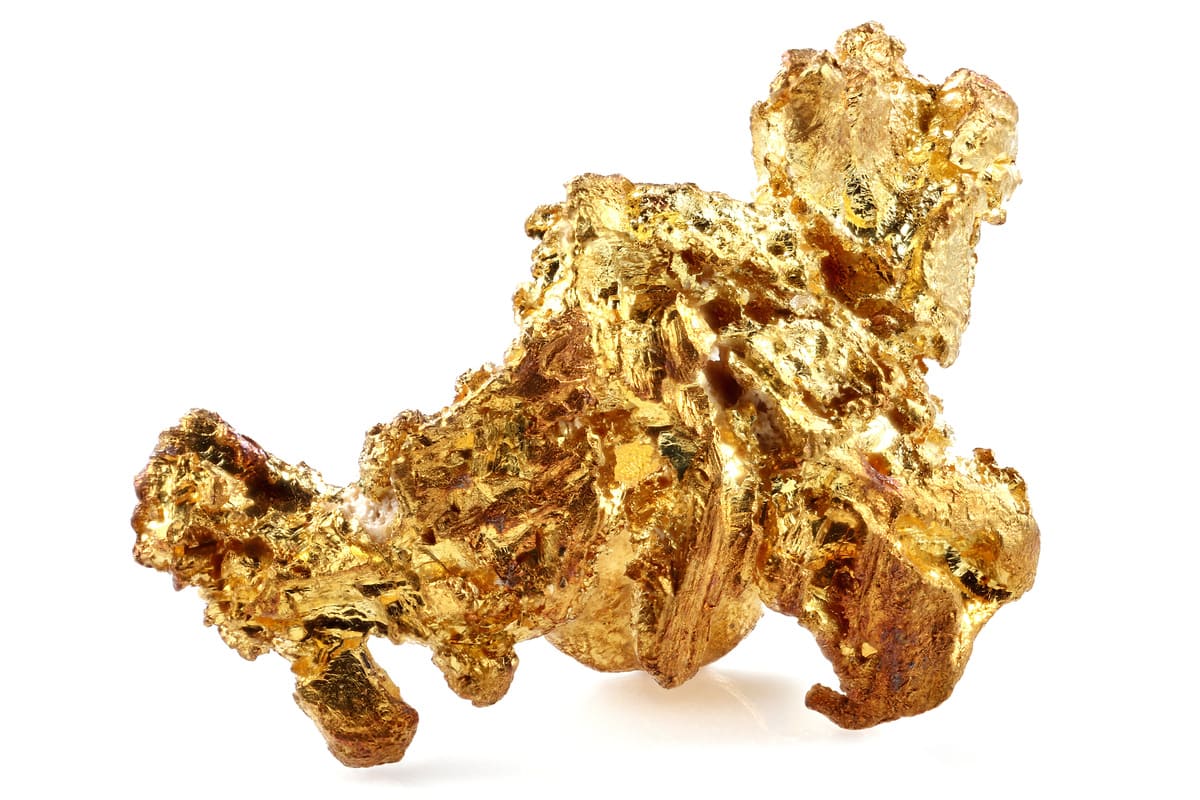Stock-to-flow ratio
In our day and age of fiat money, the volatility of all kinds of assets is particularly high. Newly created fiat liquidity is continuously pushing the value of financial assets in all directions. The ups and downs of exchange rates invariably lead to stronger demands for “fair” valuations from all market participants. And this in turn tends to make valuation models very popular indeed.
Of course, there are conventional valuation methods which are widely recognised in the financial world for asset classes such as stocks and bonds. But how meaningful these are today, while this flood of fiat money continues, really has to be answered elsewhere. Opinions differ about the correct valuation of gold and, more recently, about the valuation of bitcoin too. Neither of these assets can yield interest or generate a cash flow, which makes it more difficult to construct any model to determine a quantitative valuation.
Valuation model wanted
To avoid being completely in the dark on such matters, financial analysts often base their assessment of these assets on supply and demand. So changes in supply and demand are carefully observed in order to draw some conclusions about current prices. The demand for gold is usually set in relation to gold production, in other words the annual mining of new gold.
While it’s extremely difficult to correctly determine gold demand because of the subjective components involved, focusing solely on the annual expansion of the gold supply is also insufficient. In contrast to other consumer and manufactured goods, the yellow precious metal is never consumed or entirely used up. All the gold stocks which have ever seen the light of day on this earth still exist in one form or another, and therefore represent potential supply. And likewise, everyone living on this planet is effectively a potential customer for gold.
What does the stock-to-flow ratio measure?
Contrary to popular belief, gold is therefore available in abundant quantities, because it’s a precious metal which is almost indestructible. As a result, the annual flow of new production has relatively little influence upon the existing gold supply. So as a proportion, the existing gold supply is very much higher than the new production, and it is this metric which the stock-to-flow ratio describes.
With this benchmark, it thus becomes possible to determine the relationship between the existing supply of any raw material and the rate of annual creation or extraction of new quantities of that material. Compared to other precious metals such as platinum or silver, gold has a much higher stock-to-flow ratio: The ratio for platinum is approximately 1, while the ratio for silver stands at 22. Gold’s stock-to-flow ratio on the other hand highly outshines that of all other commodities and is documented as being over 70. So while it only takes about a year for current platinum production to double the current platinum inventory, it takes 22 years for silver to achieve this, and over 70 years in the case of mined gold.
When considering the supply parameter, a distinction must always be made between hoarded inventory (stock) and circulating inventory (flow). The high stock-to-flow ratio of gold signals that potentially large hoards of this precious metal must exist. In fact, the gold stock that is hoarded most certainly exceeds the gold flow in circulation many times over.
Money: the most marketable commodity
But why does gold now have the highest stock-to-flow ratio among precious metals? Or to put it another way: why has gold been hoarded since time immemorial? To answer these questions, we now have to devote our attention to some monetary theory.
Different people define money in different ways. But for our purposes, the most plausible definition is: money is the most marketable commodity and therefore has the highest indirect exchangeability. This high marketability comes from the fact that money perfectly fulfils certain objective properties required for effective exchangeability over time and distance. The most important of these are: divisibility, uniformity, durability, portability and limited supply.
In economic terms, money has the least falling marginal utility. Money is thus diametrically different from other goods in this one respect. Their marginal utility diminishes until the customer has enough of a corresponding commodity at some point. For example, even an additional unit of water in the desert will become worthless at a certain point once you can no longer drink, store or transport any further quantities of water.
This is usually very different with money. You will always be happy about receiving an additional unit of money. This is because money is the most marketable commodity and therefore, as a universal, indirect medium of exchange, it can always be readily exchanged for any other commodity.
The more marketable, and thus the more exchangeable, a commodity, the more it makes sense to keep it. Storing and hoarding such commodities becomes a quasi-objective value in itself – i.e. the value of constant availability as a medium of exchange for other commodities. And the more marketable something is, the lower the reduction in value during any exchange.
By definition, money is the most hoardable raw material, and gold too has proven to be a hoardable commodity. The hoarding of gold over millennia has led to today’s high stock-to-flow ratio, and demonstrates that gold must have fulfilled the objective properties of money very well, which is why the yellow precious metal has become a very marketable commodity. In this sense, it can be said at this point that a high stock-to-flow ratio is a necessary but insufficient prerequisite for money.
Rising production costs
The high hoardability of gold is expressed in its high stock-to-flow ratio. This cannot be easily brushed aside and is commonly attributed to the natural scarcity of gold. But isn’t there some kind of contradiction here? After all, it was mentioned earlier that gold was available in abundant quantities.
This paradox can be resolved as follows: Gold cannot be consumed. Once it has been mined, any inventory will continue to exist in one form or another, and therefore serves as a potential commodity which could then be brought back on to the market. At the same time, new production – i.e. mining designed to expand the supply of gold – is an expensive process. Gold is not extremely scarce, but is just distributed in the earth’s crust in such a way that the effort required to extract it increases exponentially with the amount to be extracted: More gold deposits are being discovered deeper and deeper in the layers beneath the earth’s surface, which means the extraction of such deposits requires ever greater efforts.
This is another way in which the yellow precious metal is economically different from many other commodities. Gold production generates rising marginal costs – the highest among all of the commodities. Every additional unit of gold that has to be mined is accompanied by increased production costs. Gold is thus unlike the production of most other goods, which, due to economies of scale, tend to become cheaper to produce once demand increases for such goods. Larger production volumes usually mean the corresponding price per unit will fall.
Rising marginal production costs make it difficult or even impossible for the flow of new stock to be significantly expanded over a short period of time, even if the demand for gold is high. In such circumstances, these rising marginal production costs mean that further new gold production is only as lucrative as the additional demand and consequent increase in the gold price allow. Thus it is the rising marginal costs which are likely to ensure the stock-to-flow ratio of gold will remain high for the foreseeable future.
Gold versus Bitcoin
The arrival of the cryptocurrency asset bitcoin, often described as synthetic or digital gold, has introduced a new asset which also has a high stock-to-flow ratio. Bitcoin’s stock-to-flow ratio currently stands at around 56. But since bitcoin conducts what are known as halvings, where by the amount of newly created bitcoins (produced on average every ten minutes) halves, this cryptocurrency asset will have a stock-to-flow ratio of 121 by 2026.
Bitcoin users highlight the stock-to-flow ratio as an indicator for the hardness of a currency. So the higher the stock-to-flow ratio of an asset, the harder it is. This hardness should also serve as an indicator for the likely degree of monetary debasement. The harder an asset, the less its value will tend to be diluted – for example by prevailing inflationary trends.
Is bitcoin even better than gold in monetary terms because it will eventually possess a higher stock-to-flow ratio? As mentioned above, a high stock-to-flow ratio is a necessary prerequisite condition, but not a sufficient one. One could argue that gold is valued as money precisely because it has a high stock-to-flow ratio, which at the same time exhibits a stable supply curve. With bitcoin, on the other hand, ever since the creation of this cryptocurrency asset its stock-to-flow ratio has increased by leaps and bounds every four years due to the halvings which occur. So bitcoin has an ever higher stock-to-flow ratio, but that’s also precisely why it is not a stable commodity.
Thus, according to this argument, money needs both a high stock value and a steady, stable flow. If one or the other of these two components is not present, the logical consequence is high volatility which ultimately also impacts its monetary character.
A knowledgeable bitcoin advocate would answer this argument as follows: Bitcoin is a proto-currency, a money that is just emerging. So with bitcoin it will take a few years, and thus plenty of halvings, until the bitcoin monetization phase is to some extent complete. With each further halving, the halving of the supply becomes less and less important in absolute terms until we reach a point where the flow is basically stable. Of course, all this assumes that bitcoin will still remain functional after a few more of those halvings.
Summary
- Neither a simple consideration of the gold demand, nor that of the gold supply, is alone sufficient for proper valuation of this yellow precious metal.
- Unlike other raw materials, gold is never consumed. All the gold ever mined could potentially be sold, and every person remains a potential buyer.
- The stock-to-flow ratio measures the relationship between the existing supply of any raw material and the annual extraction of further supplies of the new material.
- Of all commodities, gold has by far the highest stock-to-flow ratio.
- By definition, money is the most marketable commodity and, in economic terms, has the least decreasing marginal utility.
- The higher the stock-to-flow ratio, the more readily available a commodity becomes. A high stock-to-flow ratio is a necessary, yet insufficient, prerequisite for money.
- Gold is not extremely scarce, but just distributed in the earth’s crust in such a way that the extraction costs increase exponentially with the amount to be extracted.
- With every additional unit of gold that has to be mined, the production costs increase. So gold shows no economies of scale, but the required mining effort increases as more and more gold is being dug from the ground.
- Bitcoin, an asset that was only created twelve years ago, will have a stock-to-flow ratio almost twice as high as gold by 2026.
- Bitcoin is in its monetization phase and does not have a stable flow due to the process of halving, whereby the new amount of bitcoin units created every ten minutes is halved every four years.
- Whether bitcoin will still exist once the halvings are complete and its flow has stabilised is quite difficult to predict at the moment.









